This morning I scanned a few more recently rediscovered colour slides, of West Brompton Cemetery from February 2009.

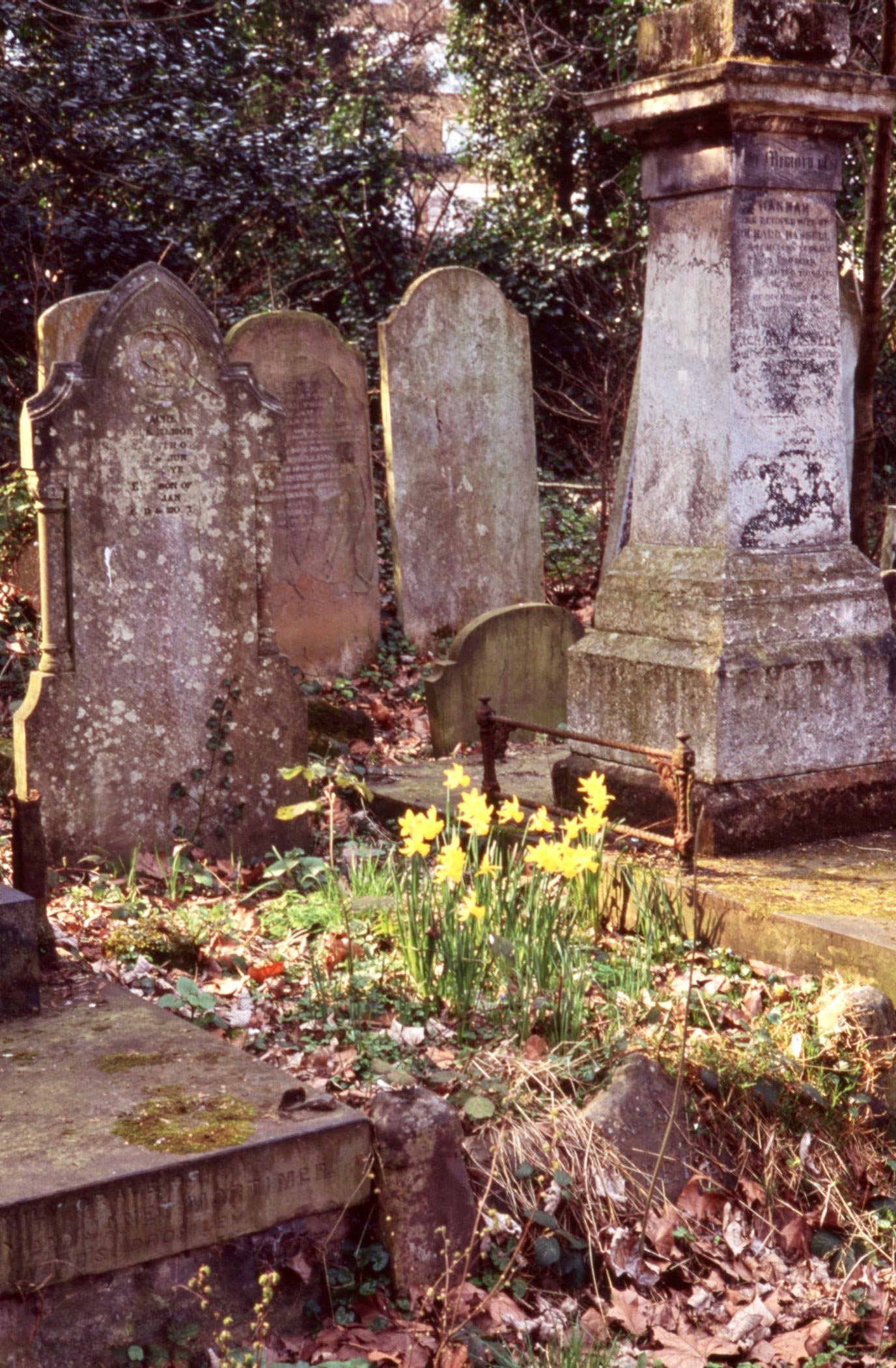
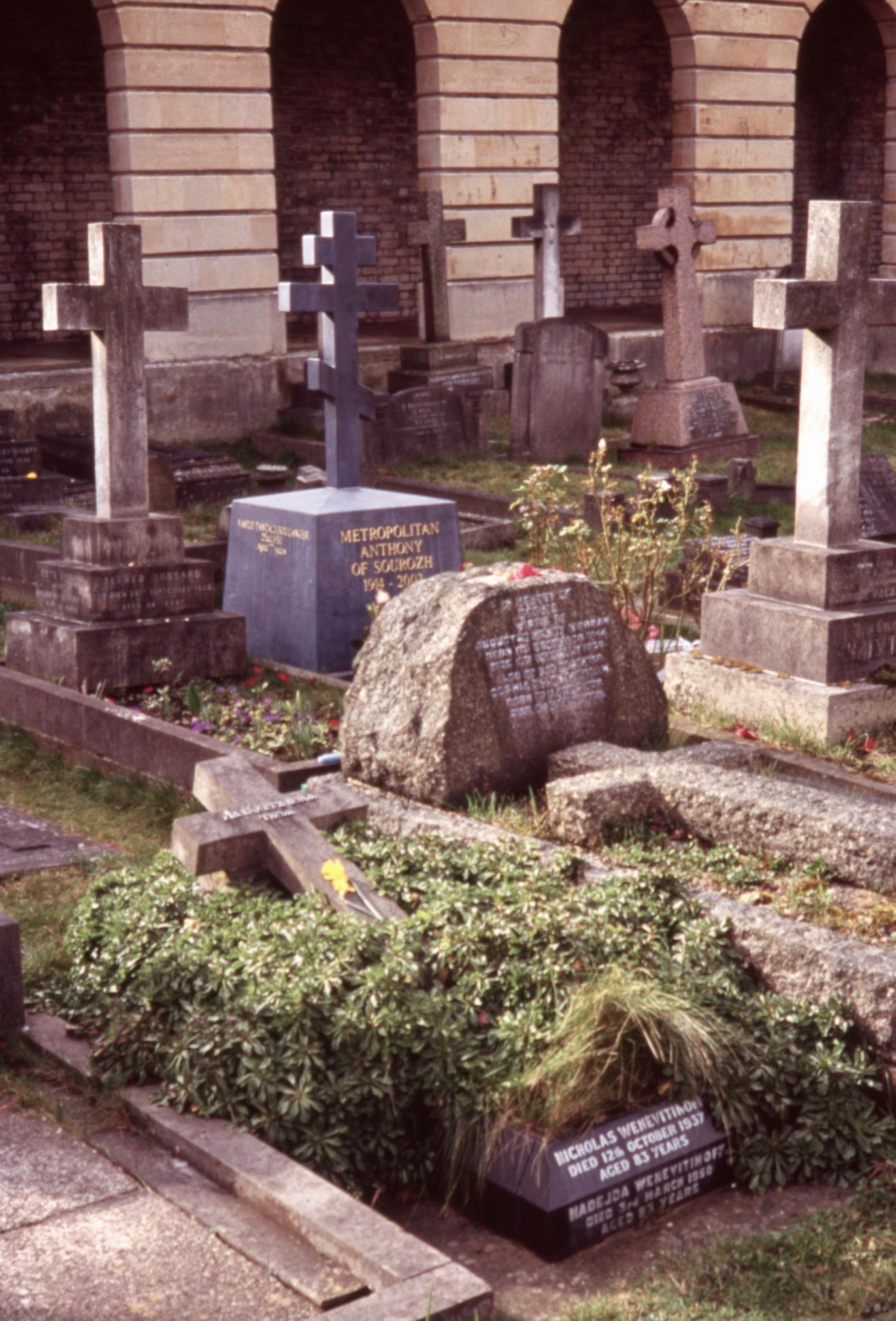
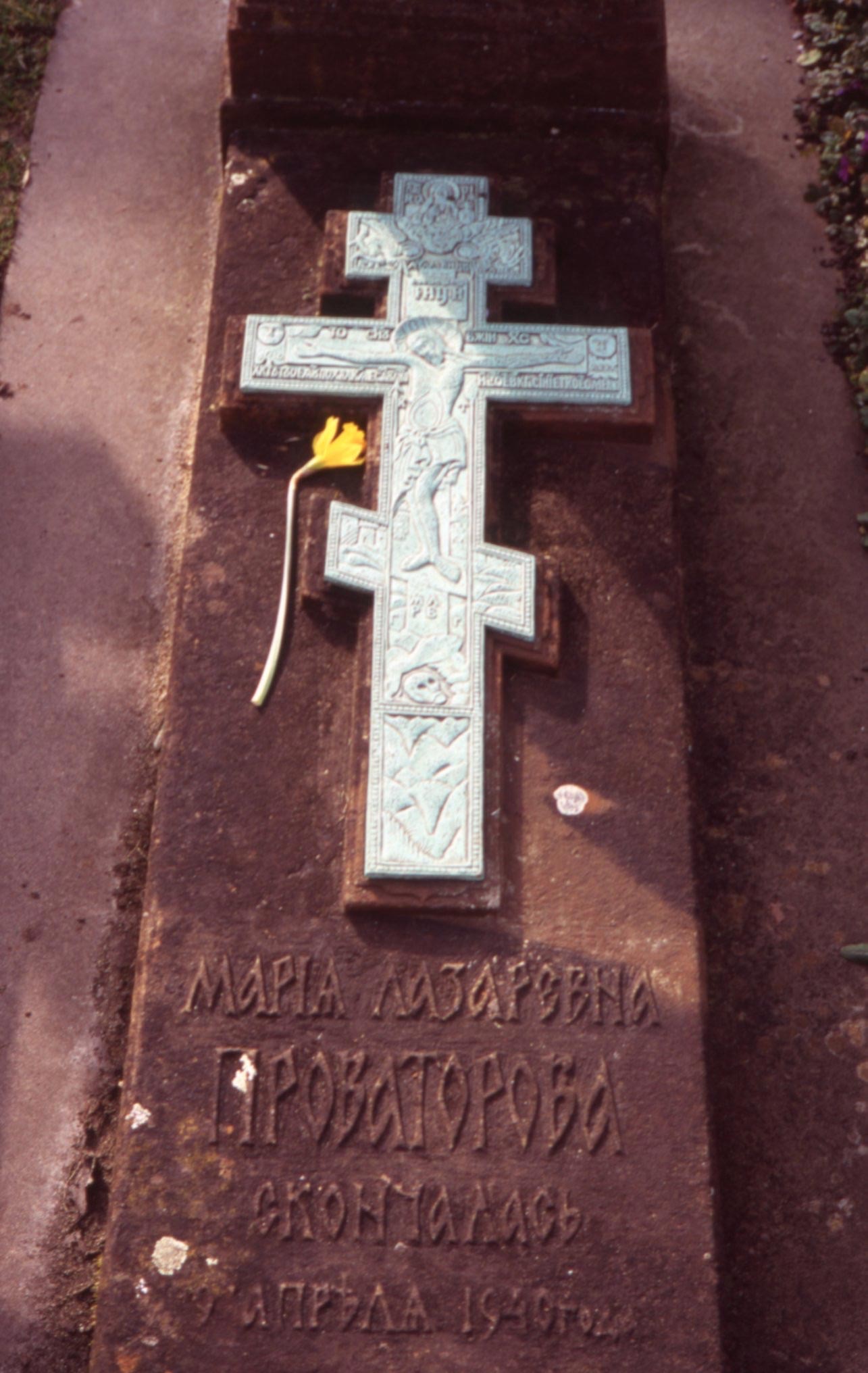
As can be seen from these first four images, this was the time for daffodils to bloom. At least two of the stones in the second picture bear the name Hannam; single blooms have been laid on the cross on Nicholas Wenevitinon’s plot in the third, and beside the crucifix on the fourth. Perhaps one of my readers will be able to read the inscription on this last stone. (See John Knifton’s response to this, and koolkosherkitchen’s confirmation, in the comments below).
This is the memorial to Robert Coombes who features in this page from https://www.royalparks.org.uk/parks/brompton-cemetery/explore-brompton-cemetery/robert-coombes
‘Robert Coombes (1808-1860)
The fastest man on the Thames and the Tyne.
Coombes was one of the greatest professional oarsmen of his time. He began rowing when he was still a boy, working as a waterman carrying passengers on the River Thames.
 Thames watermen rowed passengers up and down the river, while lightermen carried goods and cargo. Both required great skill, strength and an intimate knowledge of the river and its tides. (Credit: Wikimedia Commons via Flickr)
Thames watermen rowed passengers up and down the river, while lightermen carried goods and cargo. Both required great skill, strength and an intimate knowledge of the river and its tides. (Credit: Wikimedia Commons via Flickr)
He started winning rowing races when he was in his late twenties, becoming English Sculling Champion three times. Though he was small and light, Coombes’s considerable rowing skill meant he could beat bigger and stronger men.
He competed individually but also had notable rowing success as part of a crew of four. Coombes’ team beat renowned rower Thomas Clasper and his crew on the River Tyne for the first time in 1842, and several times afterwards on the Thames.
(Credit: Illustrated Sporting & Dramatic News)
Coombes went on to coach teams from both universities competing in the Oxford and Cambridge boat race, leading Cambridge to victory twice. He stopped coaching when controversy arose over the use of professional (working class) watermen to teach the amateur (upper class) university teams.
 The Oxford and Cambridge Boat Race in 1841, a year after Robert first became involved as a coach. (Credit: Wikimedia Commons)
The Oxford and Cambridge Boat Race in 1841, a year after Robert first became involved as a coach. (Credit: Wikimedia Commons)
Despite his incredibly successful rowing and coaching career, Coombes died in poverty in Kent Lunatic Asylum in 1860. His impressive monument, topped with an upturned boat, was paid for by friends and members of the public. Many Thames watermen came to his funeral.
 In 1700, the men who rowed people and goods on the Thames joined together form The Company of Watermen and Lightermen. The Company, based at The Watermen’s Hall in the City of London, remains a working guild and is actively involved with the life of the River and those who work on it. (Credit: Steve Cadman / Wikimedia Commons via Flickr (CC-BY-SA))‘
In 1700, the men who rowed people and goods on the Thames joined together form The Company of Watermen and Lightermen. The Company, based at The Watermen’s Hall in the City of London, remains a working guild and is actively involved with the life of the River and those who work on it. (Credit: Steve Cadman / Wikimedia Commons via Flickr (CC-BY-SA))‘
(Garrulous Gwendoline’s comments below offer more information on Watermen and Lightermen)
This bas relief plaque commemorates
‘Samuel Leigh Sotheby (1805-1861)
The third and final generation of the Sotheby family to be involved with the famous auction house.
Samuel Leigh was the grandson of bookseller and auctioneer John Sotheby, who helped establish the celebrated auction house that still bears the family’s name.
John’s son Samuel expanded and rebranded the family business, then Samuel took on his own son, Samuel Leigh. Father and son worked well together. Samuel Leigh proved to be a good businessman, and was responsible for many of their finest catalogues. However, the company got into difficulties in 1825 and was declared bankrupt.
Samuel Leigh changed the company name to S L Sotheby in 1837 and, when his father died five years later, took on his accountant John Wilkinson as a partner. John was a great salesman, and Samuel produced beautiful auction catalogues. Between them, they rebuilt the business into the premier auction house for antiquarian books.
Samuel Leigh also edited and completed books begun by his father, and wrote and published his own work, including a volume on John Milton’s autographs. He was a great collector too, particularly of auction house and library catalogues, and the works of English artists.
Samuel Leigh died tragically and unexpectedly in June 1861. He was walking near Buckfast Abbey in Devon, when he fell into the River Dart and drowned.’ https://www.royalparks.org.uk/parks/brompton-cemetery/explore-brompton-cemetery/samuel-leigh-sotheby2
The Coldstream Guards are well represented in the military section. (For more information on this, see the link on Quercus’s comment below).


These last two black and white conversions feature one of the covered arcades and a sculpture I haven’t identified.
This evening we dined on Jackie’s tasty cottage pie; toothsome cauliflower, carrots, and cabbage, with meaty gravy. She drank Hoegaarden while I drank more of the Comté Tolosan Ruge.
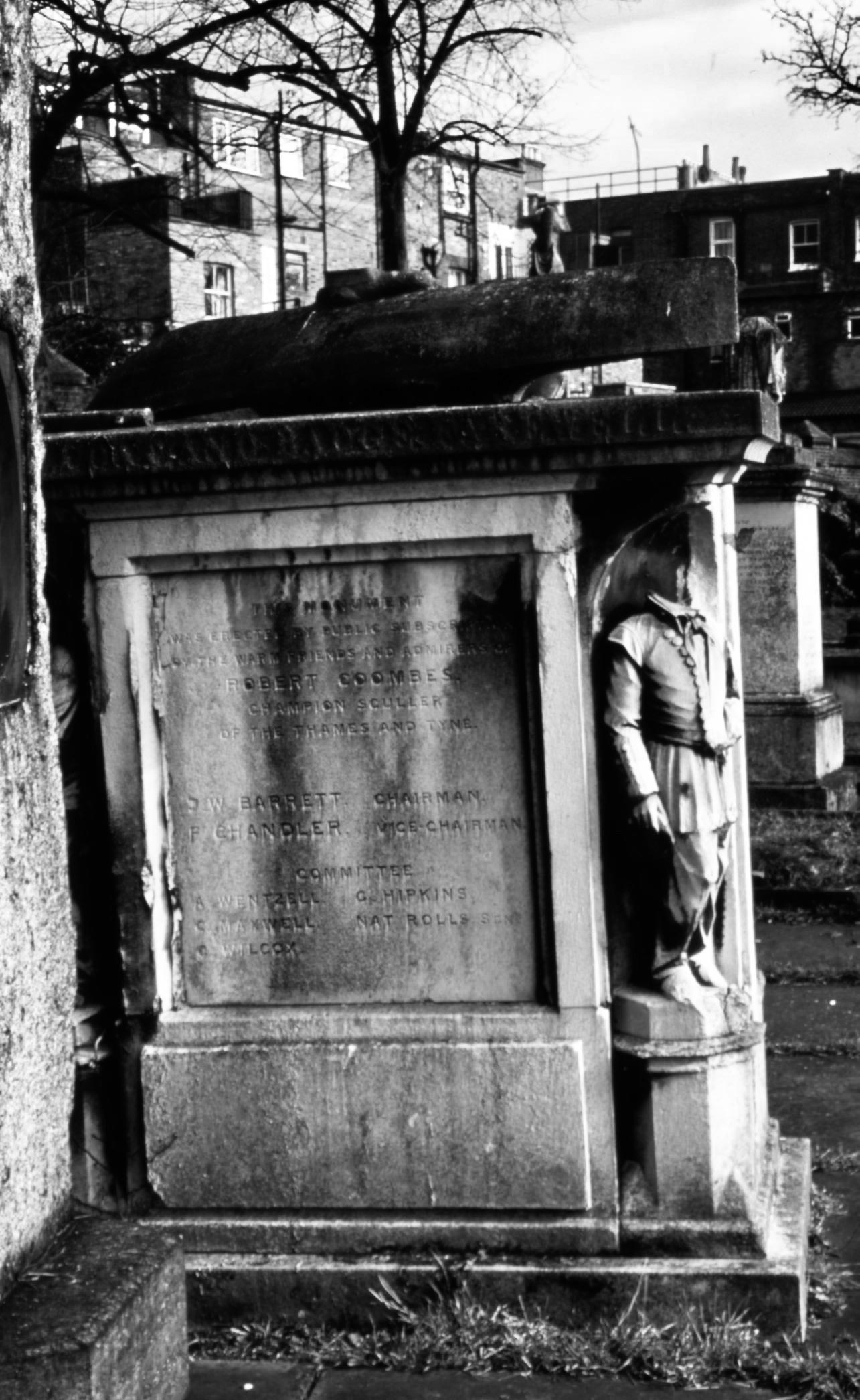
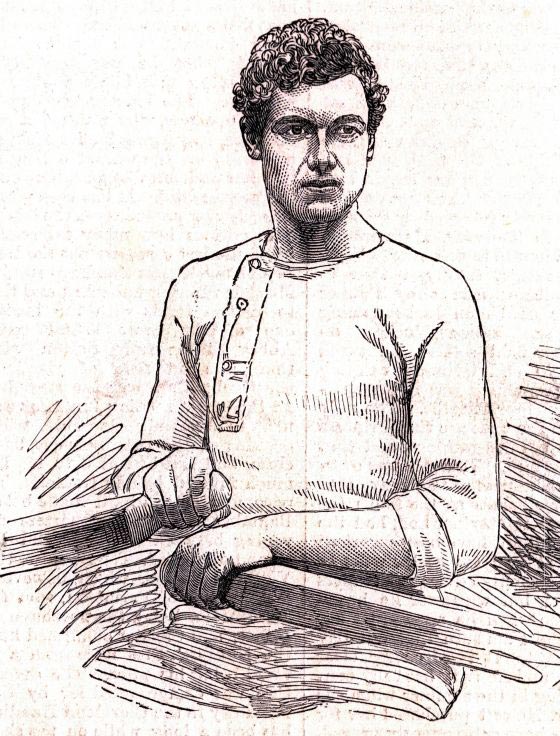
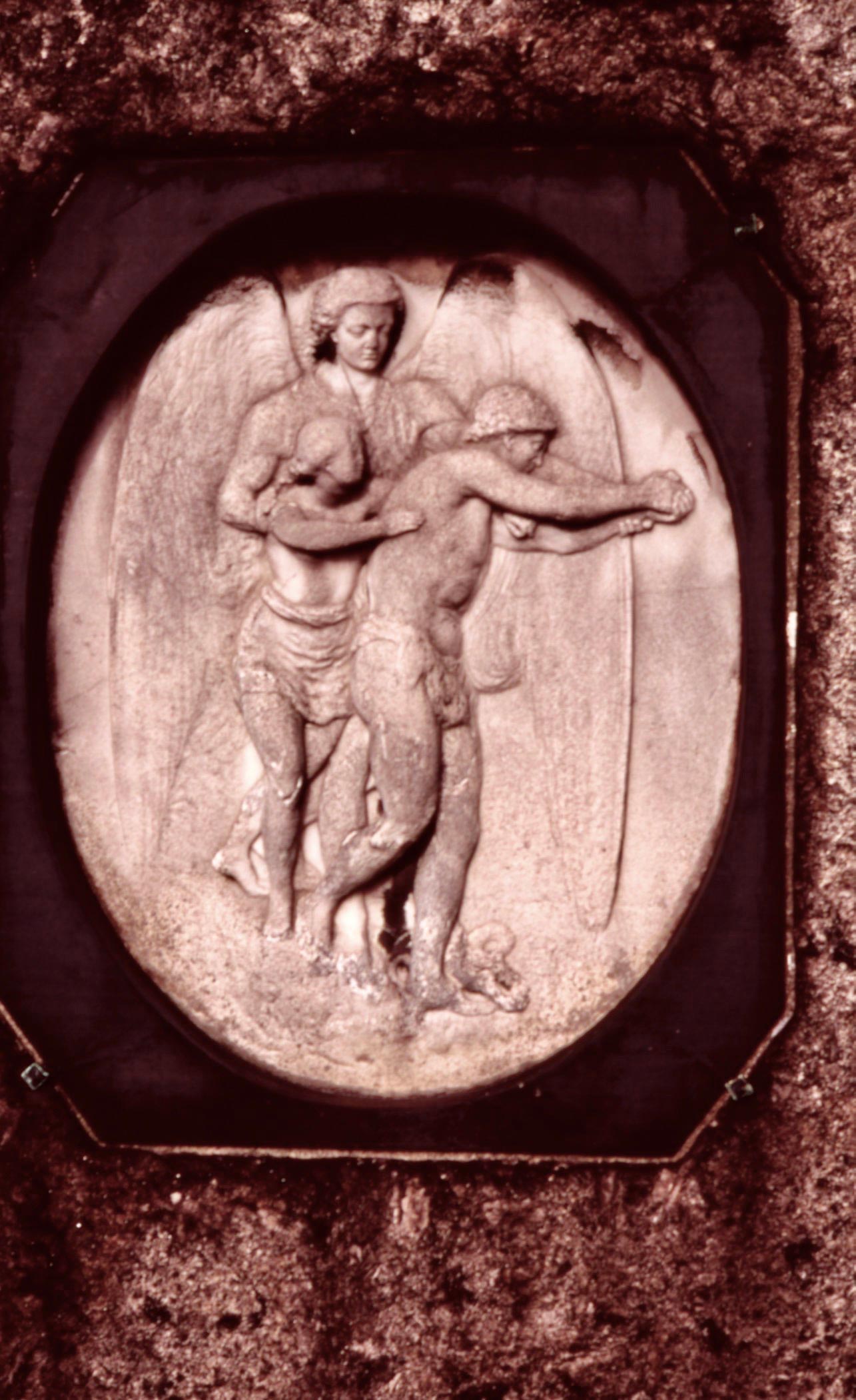

he Derrick – i could not make out the inscription – but tried and enjoyed learning a bit of background connected to the Sotheby’s today.
that is so tragic to fall in a river and have it take your life.
oh and tsk! the mention of why Coombes stopped helping the teams because of controversy if working class helping the uni students – reminds me that social dynamics have been at play since mankind has existed and hope that is not what led it his demise – the social head games of the time –
Let’s hope that that wasn’t a contributing factor, Yvette. Thanks very much
yes – let’s hope
That’s what caught my attention about this post, also. Class distinction at its worst?
✌️
Indeed
I so enjoyed reading this post – it is packed with fascinating facts, thank you!
What a sad end Coombe seems to have had, though he clearly had a lot of really good friends.
It is lovely to see the Waterman’s Hall – such an unimposing building on the outside, and located up a little street as it is, but a real gem on the inside. Let’s hope that those City Halls, and all other spaces, all over the country, that are used for social events, can soon re-open; perhaps when the daffodils come out this year, or shortly after…
Thanks very much, Emma. A nice link with daffodils.
Such history, staring us in the face, if we only dare take a look!!
Excellent work at ‘taking a look’, Derrick!
Thanks a lot, GP
Oh I loved this meaty contribution tonight: filled with interesting photographs and background information. Thank you for sharing all of this!
And thanks very much to you, too, Anne. I’m pleased you liked it
I LOVE that image ( Illustrated Sporting & Dramatic News ) of Coombes and the story behind his career. What a shame he had to die in poverty after such an illustrious career. Your photos are wonderful, Derrick. Thanks for the tour. So interesting!! <3
Thanks very much to you, too, Jan X
Cemeteries are so incredibly interesting
Indeed – especially the older ones. Thanks a lot, Sheree
A wonderful story about the rower Robert Coombes, but such a sad ending for the man Derrick..
Sad, and early, indeed, Ivor. Thanks very much.
Such interesting history, and such a sad ending for Coombes. So many condition might have made someone then seem a “lunatic,” but it’s sad his friends couldn’t help him before he died. I like those two black and white photos at the end, particularly the shadows in the covered arcade.
Thanks very much, Merril. It was a sad ending; those last two did convert nicely. I ploughed through Google images to try to identify the sculpture – although there were a few others of her, no-one had named her.
A post filled with history. A nice way to spend the day. Have a wonderful weekend.
You too, Mrs W. Thanks very much
Your welcome. Thank you.
I love the word ‘waterman,’ though its rarely used in this country. It endures in the names of restaurants and pubs, but as a descriptor for people who make their living on the water, it seems mostly east coast, and denotes the oystermen and fishermen who make their living that way.
Sotheby’s I know, of course. Every now and then one of their high dollar auctions hits the papers, and it’s always fun to read about them.
Thank you very much, Linda
Thanks for taking us along on this interesting tour, Derrick. Great photos!
And thanks for your company, Jill
I just love strolling through cemeteries, especially the older ones. You learn so much! Thanks for sharing the pics
I’m pleased to take you along, M.B. Thanks a lot for your appreciation
Another interesting tour. I had to go and look up the Guards after you mentioned them.
https://tinyurl.com/y62ysy8m
Good move, Quercus. I am adding an alert to this comment in the main text. Thanks very much.
🙂 Always something more to learn in the world of blogging.
Indeed – and John Knifton has translated the mysterious inscription 🙂
That shows the benefit of blogging a a community – I thought of having a go at it but thought it was Greek, so I wouldn’t have got very far. 🙂
🙂 It was all Greek to me
🙂
So frustrating–just wrote a long comment that “could not be posted.” Hmmmm. it reflected on the terms waterman and lighterman–and how in the mid-Atlantic states of the US, watermen are generally thought of as plying the Chesapeake Bay. I like walking in cemeteries, and it’s hard not to wonder about people’s lives while there. So nice when you can actually learn something of them, as well.
Thank you very much, Liza. So sorry about your lost comment and its wasted effort, but pleased you persevered. Because I didn’t write the text for ‘The Magnificent Seven’ I have enjoyed doing further research this time round.
Those are captivating memoirs. I was delighted and saddened to read about the champion sculler, Coombes, and the auctioneer Sotheby who drowned tragically. These elegant posts about cemeteries, and the headstones with inscriptions lucid and inscrutable, and these monuments are memento mori to the ceaseless machinations of the humans.
Thank you so much, Uma. I like ‘lucid and inscrutable’.
Yes, dratted class snobbery! It’s here, too, that’s for sure. I suppose it is everywhere. What must really stick in the craw is that talent doesn’t care which class you come from.
Quite so, Laurie. Thanks very much
So many tragic stories in that cemetary.
Yes – a good description, Liz. Thanks very much
You’re welcome, Derrick.
I like the daffodils in the graveyard and the guiding angel on Samuel Leigh’s plaque. Both are comforting.
Thank you very much, JoAnna
fascinating and interesting for sure. and so much history! thanks for the tour 🙂
And thank you for coming along, Lola
It’s incredible how much history is packed in one place alone. Brilliant photos too!
Thank you very much, D
Thank you for sharing about Mr. Coombes. Such a sad ending for him. 🙁
So many lives, stories, and memories live in cemeteries. Your beautiful photos capture all of those and I believe somewhere, somehow these people know we are remembering them. Their lives mattered. Their accomplishments counted. They are not forgotten.
Your last to photos…the B&W photos….are stunning.
I always feel a tug at my heart with the angel and human statues and artwork in cemeteries.
Hope you and Jackie are doing well today.
(((HUGS))) to all of your family. Especially <3 and hugs to your Mum.
Thank you so much for your appreciation and good wishes, Carolyn X
The cross is Russian Orthodox and the inscription reads:
Maria Lazaryevna Provatorova (emphasis on the fourth syllable, and in Lazaryevna the second syllable))
passed away
April 9th 1940
It is written in pre-Soviet era Russian so I presume this is connected with the Whites who fled to the west after the Revolution.
The letters which are archaic are the “I” of Maria which nowadays would be “N” in a mirror…….”и”
In April there is a small “b” with a line through it which was replaced in 1917 by the letter “e”, (In English “Ye”.) The very last letter, after the “L” I have never seen before. In modern Russian it would be “я” (In English “Ya”.) and expresses the genitive case ie Ninth of April
April is a good word to show the Greek letters with “A-Pi-Rho-Ye-Lambda”
Gosh. That is impressive, John. Thank you very much. I tried to follow this with research on the cemetery – to no avail, but you have added a bit more about the lady. I have amended the text to point readers to this exchange.
I enjoyed John’s explanation. Thank you! I studied Russian a bit back in 1979.
Fascinating, Lavinia
I dare say ‘lunatic’ was a label used more widely in 1860 than today, so Coombes may have died of a heart attack provoked by depression, for example. (I only recently learned that depression can have this effect.)
Thanks a lot, Helen. When I began Social Work in the ’60s people who had been labelled such as moral delinquents had spent their lives in such institutions
Yes, I’ve heard this. How appalling!
The problem then was that with the policy of Care in the Community causing large scale closures people who had spent half a century being institutionalised could not cope with the very limited support that was provided.
Yes, I remember the ‘care in the community’ debacle!
Good history. Good stories.
Thanks very much, Andrew
I enjoy these stories of sleeping residents, Derrick. I am sure they wold be pleased to know they are remembered here.
That is certainly something to ponder on. Thanks very much, Lavinia
Poor Coombes. I wonder how the University leaders justified keeping their students in ignorance rather than learning from someone who knew what they were doing? Was it thought to be cheating and that they should just bungle on their own way? Or was it the association they didn’t like? I am not convinced things are much better now, although perhaps the things we read in the news are click-worthy exceptions.
I guess we’ll never know
Inscription on the fourth stone reads “Maria Lazaryevna Provatorova, Passed away 9th of April, 1940.” John’s elucidation of the pre-revolutionary Russian Orthodox orthography is impeccable. There is also a Russian Orthodox cross in the third photo, on the grave of the Meropolitan of Sourezh. That was news to me; I didn’t know that the Crimean Bishopry of Sourezh has moved to England together with the White Russian emigrants and established a thriving community there.
Fascinating history of the Sotheby auction house.
Thank you very much, Dolly. I was sure you would be able to translate and confirm John’s history.
The pleasure is mine, Derrick.
Have added an alert in the text to this comment as well
Thank you for that, Derrick.
Have done a bit of family history for a friend and he has an ancestor Edward Redknap who was a London waterman. A photo of him in his Queen’s Waterman’s scarlet ceremonial dress exists, together with this article from the Maidenhead Advertiser, June 23rd, 1897:
A Maidenhead Man Honoured
The Queen has selected a few of her special Watermen to form a guard of honour at Buckingham Palace during Jubilee Week. These will be attired in their novel but attractive uniform and will join the ‘beef-eaters’ who are also to have special guard duties at the palace. Amongst the selected Royal Watermen is Mr. Edward William Redknap, of High Town Road, Maidenhead, and we congratulate him on having been so chosen for so honourable a position. It is not improbable that the Queen’s Watermen may have other important duties to perform in addition to acting as a guard of honour to her Majesty.
-and ‘Mr. Redknap is Captain of Mr. Carr’s (Oaklands, Castle Hill) launch ‘Lida’
Author Kate Grenville’s The Secret River, although a novel, is based around her ancestor Solomon Wiseman who was a Thames lighterman, transported to Australia (1805) for “stealing from his employers 704 lbs (319 kg) of Brazil wood from a Thames lighter”. He went on to establish a cargo rowing service on the Hawkesbury River in Sydney Australia and the area known as Wisemans Ferry is named after him.
A fascinating addition to the post, Gwen. Thanks very much. I’m putting an alert to this comment in the text
I’m honoured. Thank you.
Love these historical jaunts. 🙂
Thanks very much, Widders
Thank you for another fascinating and beautifully illustrated post, Derrick!
And thank you for reading and commenting, Ann
A wonderful post Derrick. Fascinating reading.
Thank you very much, Lindsey
Those tombs express so much! What a destiny for Coombes to die in poverty! I guess we never know what life can bring!
So true, Ribana. Thank you very much